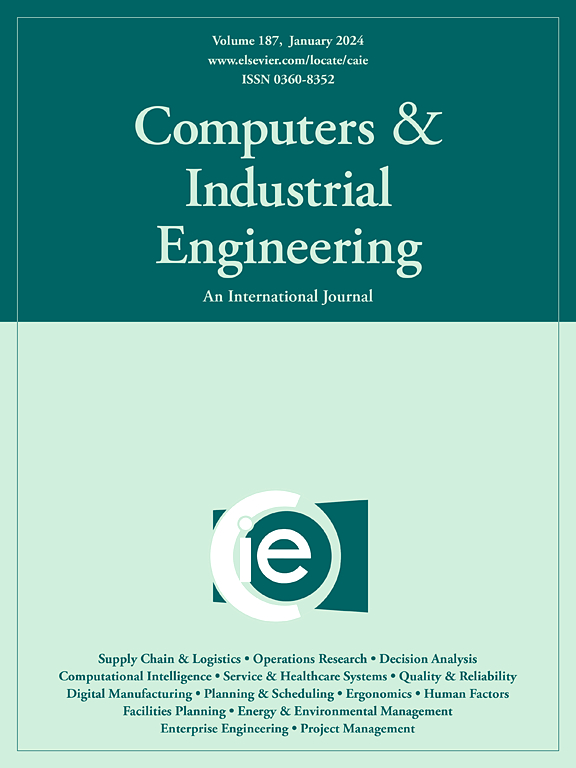机场登机口重新分配与转机连接
IF 6.5
1区 工程技术
Q1 COMPUTER SCIENCE, INTERDISCIPLINARY APPLICATIONS
引用次数: 0
摘要
由于空中交通需求的快速增长和基础设施扩建滞后,大多数枢纽机场都接近满负荷运行。作为机场最重要、利用率最高的基础设施之一,登机口资源普遍不足。受这种资源限制,登机口时刻表通常很紧,缓冲时间很少。航班时刻表紧张的一个主要后果是,在机场日常运营中,当面临航班时刻表的干扰时,可能经常发生到达和离开登机口的冲突。当遇到干扰时,航班通常需要重新安排,因此必须重新分配到其他可用的登机口。传统的登机口重新分配过程通常忽略了乘客和机组人员连接的可行性。因此,如果实施这样的重新分配计划,乘客和机组人员的转机连接很可能会中断。这种中断将给机场带来严重的不便和巨大的成本,因此在重新分配登机口的规划中具有重要意义。本文首先建立了一个明确考虑乘客和机组人员换乘连接可行性的登机口重新分配模型。然后,提出了一种迭代启发式方法对该模型进行有效求解,以满足实时应用需求。在某国际枢纽机场的实际数据上进行了测试,计算结果表明,该方法比基准方法有显著提高(平均提高75.1%)。本文章由计算机程序翻译,如有差异,请以英文原文为准。
Airport gate reassignment with transfer connections
Due to the rapid growth in air traffic demand and lags in infrastructure expansion, most of the hub airports are running close to capacity. As one of the most important and highly utilized infrastructures in airports, gate resources are generally insufficient. Restricted by this resource limitation, flight gate schedules are generally tight with little buffer time. A major consequence of tight flight schedules is that gate conflicts between arrivals and departures may frequently occur when faced with flight schedule disturbances during daily airport operations. When disruptions are encountered, flights generally need to be re-scheduled and, therefore, have to be reassigned to other available gates. The traditional gate reassignment process generally neglects the connection feasibility of passengers and crews. As a result, the transfer connections of both passengers and crews are very likely to be disrupted if such a reassignment plan is carried out. This disruption will result in serious inconvenience as well as huge costs to the airport, and therefore is of importance during the gate reassignment planning. In this paper, we first develop a gate reassignment model that explicitly considers transfer connection feasibility for both passengers and crews. Then, an iterative heuristic method is proposed to solve this model efficiently in order to meet real-time application requirements. This method was tested on realistic data from an international hub airport, and the computational results show that the proposed method yields a significant improvement (75.1% on average) over the benchmark approaches.
求助全文
通过发布文献求助,成功后即可免费获取论文全文。
去求助
来源期刊

Computers & Industrial Engineering
工程技术-工程:工业
CiteScore
12.70
自引率
12.70%
发文量
794
审稿时长
10.6 months
期刊介绍:
Computers & Industrial Engineering (CAIE) is dedicated to researchers, educators, and practitioners in industrial engineering and related fields. Pioneering the integration of computers in research, education, and practice, industrial engineering has evolved to make computers and electronic communication integral to its domain. CAIE publishes original contributions focusing on the development of novel computerized methodologies to address industrial engineering problems. It also highlights the applications of these methodologies to issues within the broader industrial engineering and associated communities. The journal actively encourages submissions that push the boundaries of fundamental theories and concepts in industrial engineering techniques.
 求助内容:
求助内容: 应助结果提醒方式:
应助结果提醒方式:


